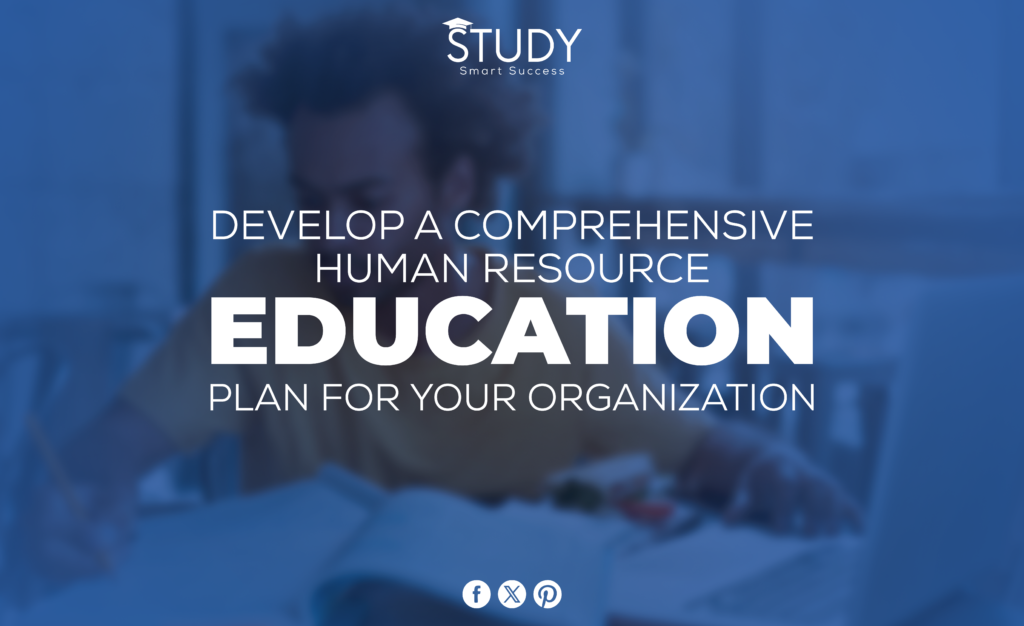Introduction
Overview of the importance of human resource education
Today’s competitive corporate climate requires HR education. HR professionals recruit top talent, engage workers, and follow labor laws. Organizations need HR education to utilize human resources and achieve strategic goals. Read More
Educational Resources for Different Learning Styles.
Assessing Organizational Needs
Conducting a comprehensive needs assessment
Before starting HR education efforts, a thorough needs assessment is necessary to understand the organization’s needs and challenges. This assessment may include HR professional feedback, stakeholder surveys or interviews, and HR process and practice analysis.
Identifying gaps in HR knowledge and skills
After the requirements assessment, identify HR knowledge and skill gaps. Compare HR workers’ existing competencies to those needed to support organizational goals. Talent acquisition, performance management, HR technology, and employee relations may have gaps.
Analyzing organizational goals and objectives
Assess the organization’s overall goals and objectives to align with organizational priorities. Knowing the company’s strategic direction can help adapt HR education programs to unique needs and achieve organizational goals. Senior leadership’s strategy plans, mission statements, and KPIs may be examined.
Setting Clear Learning Objectives
Defining specific learning outcomes for HR education
Clear and explicit learning outcomes must be set to maximize HR education efficacy. After the education program, these outcomes should outline HR professionals’ expected knowledge, abilities, and competencies. Learners may grasp recruitment methods, labor rules and regulations, conflict resolution, or HR technology tools.
Aligning objectives with organizational goals and strategic priorities
Integrate HR learning objectives with the company’s goals and strategic priorities to ensure success. HR experts can then focus on establishing competencies that complement company goals. If staff retention is a company priority, HR education should include engagement and retention approaches.
Ensuring relevance and applicability to the HR function
HR education objectives must coincide with business goals and be relevant to HR. Focus on subjects and areas of knowledge relating to HR professionals’ organizational roles and activities. Education programs that address HR professionals’ unique requirements and difficulties can improve work performance and organizational success.
Designing the Curriculum
Core topics and areas of focus for HR education
The HR education curriculum must encompass a variety of basic themes and areas of focus relevant to the HR role. Examples include
- Recruitment and selection,
- Onboarding,
- Performance management,
- Salary and benefits,
- Employee relations,
- HR legal compliance,
- Diversity and inclusion,
- HR technology, and
- Strategic HR management.
By thoroughly covering these basic themes, HR practitioners can create a well-rounded skill set to manage all elements of human resources.
Incorporating a mix of theoretical knowledge and practical skills
Academic and practical skills must be matched for HR education to work. HR practitioners understand HR principles and practices through theory, but skills help them apply them. Case studies, role-playing, and hands-on projects demonstrate theory and practice, teaching students job-relevant skills.
Selecting appropriate delivery methods (e.g., workshops, seminars, online courses)
HR education includes workshops, seminars, online courses, webinars, and self-paced modules. Consider accessibility, engagement, and efficacy when considering distribution methods. Workshops and seminars offer interactive learning and peer networking, while online courses are convenient for busy students. HR education programs can fulfill participants’ needs by offering several delivery methods.
Ensuring flexibility and adaptability to accommodate diverse learning styles
Tastes, learning styles, and needs differ. Some prefer movies and infographics to lectures and discussions. The curriculum must be adaptable to diverse learning styles. Self-paced learning, alternative content delivery formats, and multimedia tools make HR education programs accessible and engaging for all learners.
Implementation Strategies
Establishing a timeline and schedule for HR education initiatives
Successful HR education efforts require a clear timeframe and schedule. This involves setting start and finish dates for each education program and arranging sessions, workshops, and modules. HR professionals can guarantee that education projects are completed on time by setting a timeframe.
Identifying resources and budget allocation
HR education projects require resource identification and allocation. They may involve supporting curriculum development, paying trainers or consultants, buying educational materials or software, and incurring administrative costs. HR professionals may help education projects succeed by allocating resources.
Designing a communication plan to promote awareness and participation
Communication boosts HR education awareness and participation. HR professionals should prepare email, intranet, newsletter, and social media communication. A strategy should include education program goals, timing, registration, and participation benefits. HR professionals may encourage education by speaking clearly and consistently.
Leveraging internal and external expertise for content delivery
High-quality and relevant HR education requires internal and external expertise. Internal experts can explain company policies and best practices. Outside trainers or consultants may bring industry knowledge and new insights. Human resources professionals can learn and get practical insights by collaborating.
Sustainability and Long-Term Growth
Developing mechanisms for sustaining HR education initiatives over time
Success requires sustainability in HR education. HR experts should develop post-implementation education programs. It may involve budgeting for continuing education, regularly reviewing and updating curricula, and incorporating HR education into the organization’s learning and development strategy. HR professionals can align education with organizational goals by addressing sustainability.
Building internal capacity for ongoing knowledge transfer and skill development
Company-wide learning requires internal knowledge transfer and skill development. To develop employees, HR professionals should use mentoring, cross-functional training, and communities of practice. By letting employees own their learning and development, HR executives can establish a resilient workforce that can adapt to new challenges and opportunities.
Fostering partnerships with educational institutions and industry experts
Educational institutions and industry experts can share HR education resources and expertise. Work with colleges, training providers, and associations, HR pros. These agreements cover research, networking, guest lectures, and specialized training. Collaboration with other organizations helps HR professionals improve participant learning and stay current on HR management trends and best practices.
Anticipating and adapting to future trends and challenges in HR management
HR management education must anticipate and address problems to remain relevant. HR experts should monitor industry, technical, and legal changes. HR professionals may make education relevant and successful by predicting trends and issues and changing curriculum, delivery methods, and learning objectives. HR professionals should encourage innovation and experimentation for business growth and change.
Conclusion
In conclusion, the HR education strategy improves Human resource education professionals’ knowledge, skills, and competencies. Examples include assessing organizational needs, creating clear learning objectives, designing a complete curriculum, adopting successful tactics, and promoting sustainability and long-term growth.
Organizational success and strategic goals depend on human capital development. HR experts with the right skills can help organizations attract, develop, and retain top talent, boost employee engagement and productivity, and comply with legal and regulatory obligations. HR education is an investment in the company’s most important asset—its people.
The HR education plan promotes organizational excellence and lifelong learning. Organizations may help employees succeed, adapt, and innovate by prioritizing education and professional development. An ever-changing business environment can be mastered by firms that embrace lifelong learning.
The HR education strategy improves Human resource education professionals’ skills, boosts organizational growth, and prepares the workforce for the future. In today’s competitive market, firms can succeed long-term by investing in human capital development and promoting excellence and continual learning.


